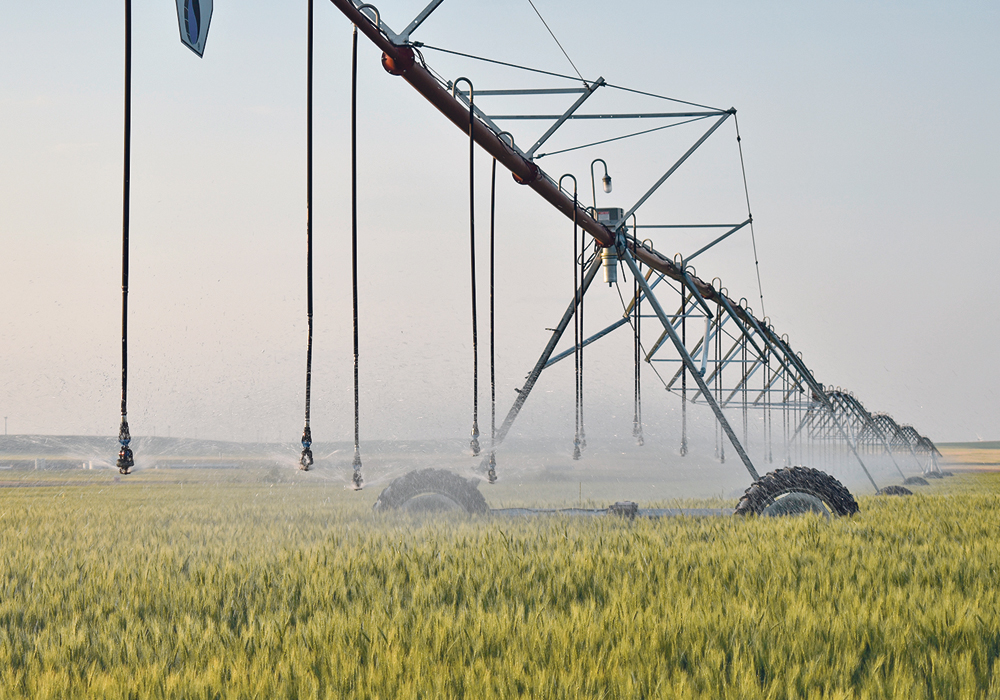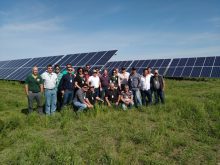Legislation has been introduced to allow the Saskatchewan government to hand over assets to to irrigation districts
The pending transfer of irrigation assets from the Saskatchewan government to districts continues to concern farmers who say they face huge costs because the infrastructure is in poor repair.
One estimate has pegged rehabilitation costs at $350 million.
The province has wanted to transfer equipment such as pumps, lifts and smaller canals to the districts for years.
In December, after years of consultation, agriculture minister David Marit introduced updates to the 1996 act that will chiefly facilitate asset transfer.
“The act will strengthen government’s ability to transfer government-owned irrigation assets to those that benefit the most from the irrigation, the irrigation districts,” he said during second reading debate.
Read Also

Farming Smarter receives financial boost from Alberta government for potato research
Farming Smarter near Lethbridge got a boost to its research equipment, thanks to the Alberta government’s increase in funding for research associations.
The legislation allows government to set the terms and conditions. For example, Marit said land associated with assets can also be transferred.
“We are also proposing restricting subsequent transfer of assets to other private entities if not deemed to be in the best interest of the public,” he said.
The new act will also make it clear the irrigation districts are responsible “to maintain, replace and decommission” irrigation works and that they need to collect enough money to do that.
“During our consultation with industry, it was clear that some irrigation districts do not see owning assets as their responsibility. We appreciate this perspective,” the minister said.
To help the districts, the act will give them the authority to enter into agreements to help diversify and attract investment. That could mean using the irrigation infrastructure to attract a value-added business, for example.
The act will provide better immunity and liability protection to the districts and continue the tax exemption on works.
The new legislation will clarify which government agency is responsible for which aspect of irrigation. Districts have said they are concerned about confusion with SaskWater, the Water Security Agency and the agriculture ministry, which all have roles.
Fines for contravening the act will go up from $5,000 to $100,000.
The Irrigation Crop Diversification Corp. will be able to collect levies from non-district irrigators to help fund research.
Finally, the act is designed to reduce government red tape.
Joel VanderSchaaf, past-chair of the Saskatchewan Irrigation Projects Association, said the districts want long-term sustainability.
“For them, the key piece is the long-term commitment,” he said after the recent SIPA annual meeting. “That means sort of a financial backbone to make sure it doesn’t fall squarely on the shoulders of the farmer but to all the beneficiaries, which is recreation, municipalities, industry and all the beneficiaries that live in communities that are surrounded by irrigation infrastructure.”
Economic research by Jillian Brown at the University of Saskatchewan has found benefits of $1.44 for every $1 invested in irrigation.
VanderSchaaf said the water infrastructure has been neglected and irrigators believe it should be considered the same as highways and power lines.
“We feel that there’s a responsibility for government to help maintain them in the long term,” he said.
“If irrigators are going to be solely responsible for the maintenance and repair and upkeep and even advancement of this infrastructure, that’s a bitter pill. That’s a lot of responsibility and a lot of expense and it will make it probably not sustainable if it’s solely on the irrigators’ shoulders.”
The South Saskatchewan River Irrigation District is the largest and the bill in that district alone is estimated at $150 million.
A government proposal to share rehabilitation costs on a 2:1 ratio at $21-per-acre by district and $42-per-acre by government would mean irrigators have to pay far more than they do now.
In a November estimate to the SSRID board, general manager Brian Bartel noted that the $4 per acre current replacement commitment from members generates about $164,000. The costs in 2018 were about $240,000.
“We could have increased that number due to the failing infrastructure we have found,” Bartel said. “This adds an additional $5.85 towards the rehab completed in 2018 for a total of $9.85 per acre.”
He said SSRID staff have been “duct taping” infrastructure for about 50 years and that won’t work anymore.
The $150 million cost would require the SSRID to increase its replacement fund to $1.5 million each year, although Bartel suggested the cost could be lower if done with staff and a government partnership.
“The present offer from the ministry of agriculture is $42 per acre, which equates to $1,764,000 per year and is more (than) adequate, but this is only guaranteed for a five-year term,” his letter noted.
VanderSchaaf said the five-year terms by which governments operate make it difficult for farmers to plan.
He said opportunities to expand irrigation to its full potential, as identified when the Gardiner Dam and Lake Diefenbaker were first constructed, suffer as a result.
“Let’s not miss the forest for the trees,” he said, referring to the focus on asset transfer when water management projects could offer economic benefits that have been well documented.
Several irrigators at the meeting said the entire process of asset transfer violates the original order-in-council of 1958 when the province agreed to “bear full cost of constructing, operating and maintaining the irrigation works.”
The agreement said the province would facilitate irrigation of about 500,000 acres. There are about 350,000 irrigated acres now.
Still, it appears the transfer will happen. Irrigator and SIPA past-chair Roger Pederson said farmers will take on the assets, but want a system that is viable and in good repair.
“The conditions have to be right. The partnership is not fair,” he said.
He noted that former agriculture minister Lyle Stewart told SIPA clearly that no new irrigation development will take place until the districts take over the assets, and that the current minister agrees.
“New development is dead until this is settled,” he said.
Others said the government keeps telling them they need to have skin in the game.
SSRID chair Murray Kasper said the on-farm cost to develop a quarter section for irrigation is about $170,000.
The district has about 41,000 irrigated acres.
“The private investment held by farm families and individuals in that district is $50, $60 million, so the farmers have some skin in the game,” he said.
He said if SSRID agrees to the government’s funding proposal it will still only raise about $10 million of the $150 million required.
“That’s why you’re seeing a lot of reticence, especially on SSRID’s part, to accept this transfer unless there’s provision that gives us some sort of ability to transfer it back if there’s no commitment beyond five years. Otherwise what have we got?” he said. “We’ve just bought a few years and we’re just going to go broke in 15 instead of 10.”
Saskatchewan Chamber of Commerce chief executive officer Steve McLellan told the irrigators to be cautious about accepting the assets with a finite deal.
“You make sure that they’re not getting off the hook,” he said.
Meanwhile, Jason Drury, the agriculture ministry’s irrigation manager, said the government will continue to listen to irrigators.


















